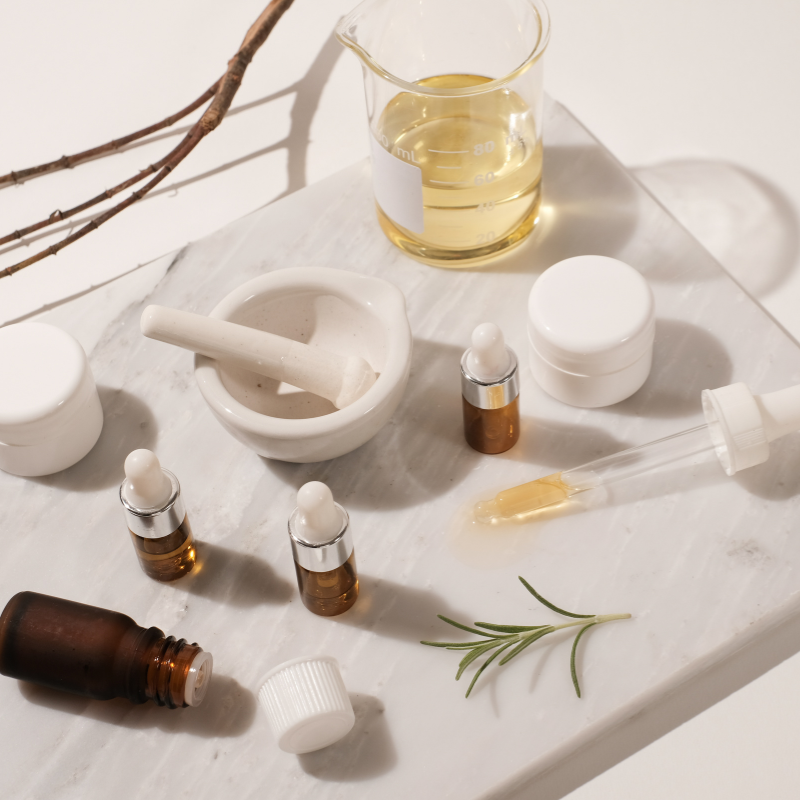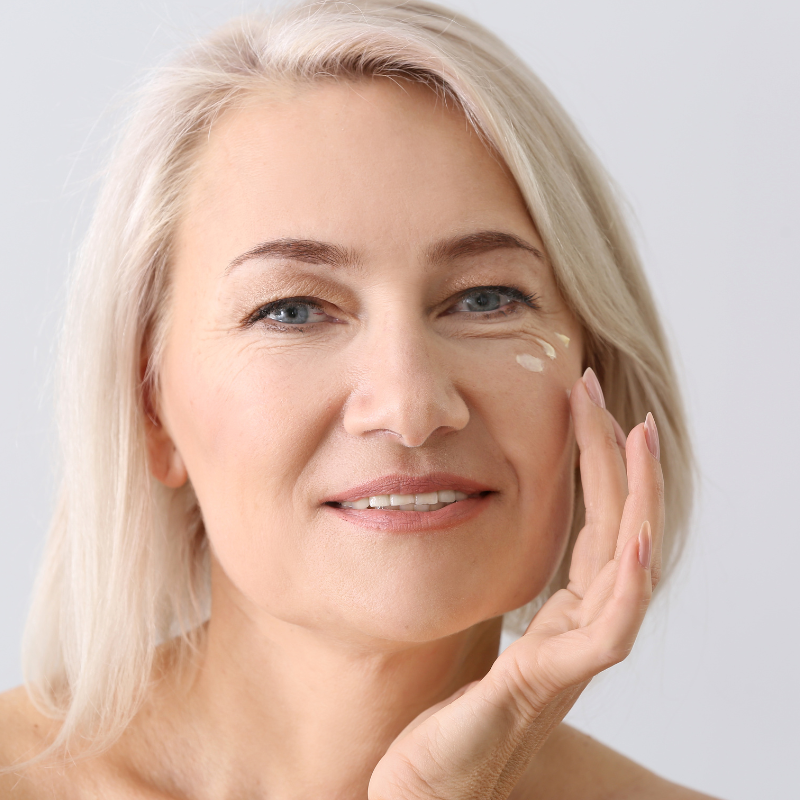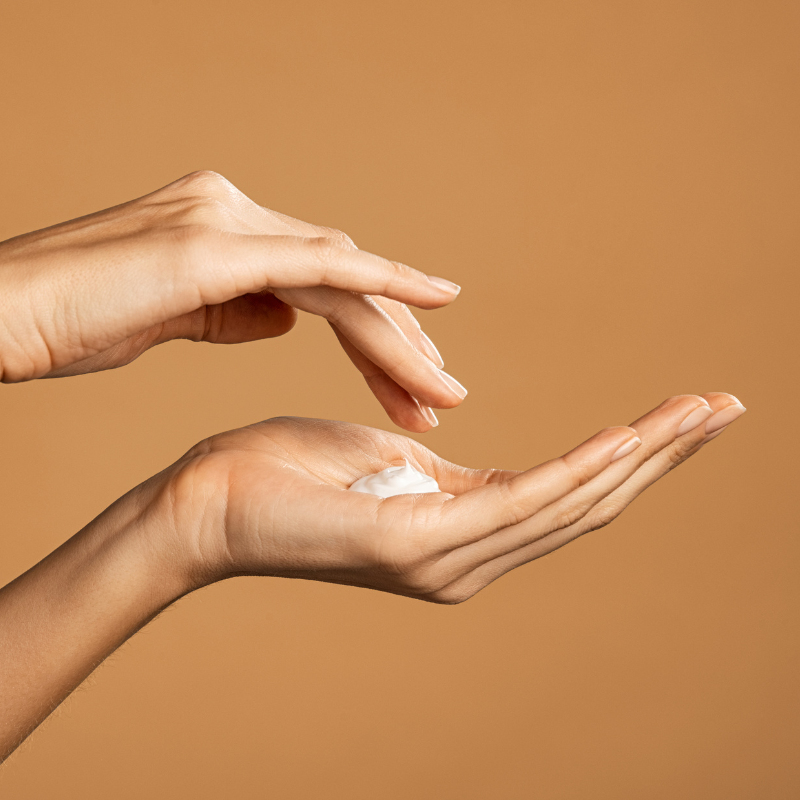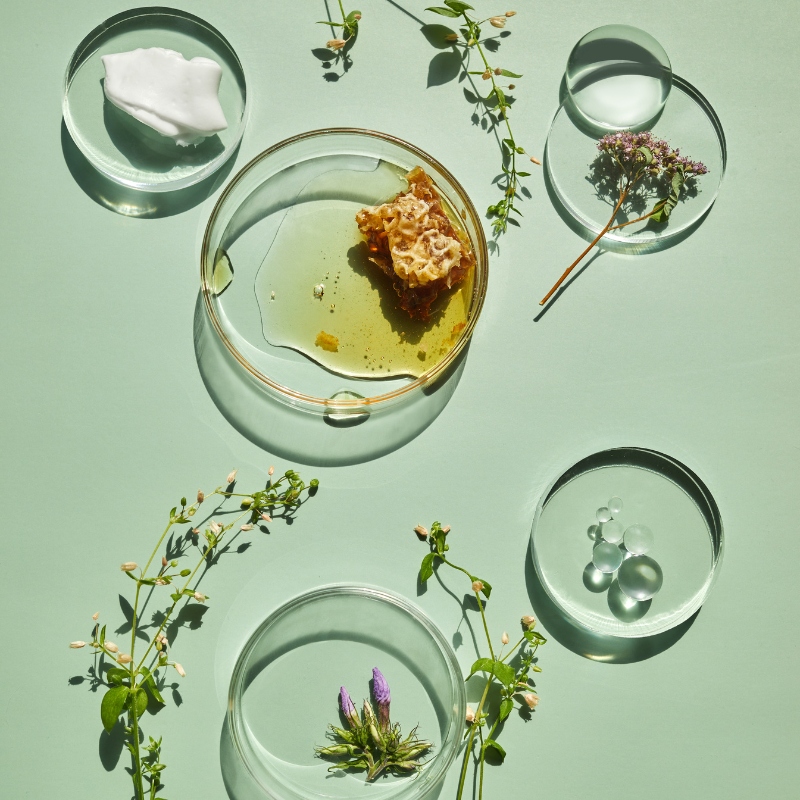How to Treat Hyperpigmentation
by Deborah Duffey, Chief Product Development Officer and President April 1, 2022

Skin discoloration in the form of brown spots, red marks, or splotches of freckle-like pigment can be frustrating. They seem to arise out of nothing, and then refuse to budge. This discoloration is called hyperpigmentation.
The reality is that hyperpigmentation can be tricky to treat—it takes a lot of patience and it can be a journey to find the right products. But by understanding what’s causing it and the exact ingredients that can make a difference, you’ll start to see discoloration make way for clear skin. There are several highly effective ingredients that can be used to lighten hyperpigmentation, but which you choose to use can depend on the results you’re looking for and what has caused the discoloration in the first place.
What is Hyperpigmentation
Hyperpigmentation is a condition where skin takes on a darker color. You might see small spots, or it can appear as larger swaths of dark areas. It’s due to the overproduction of melanin, which is what gives our skin color, but what actually causes this to happen can be any number of conditions—acne, skin injuries, sun exposure, and even hormones.
Let’s take a closer look at a few of the major causes of hyperpigmentation.
After breakouts or injuries, post-inflammatory hyperpigmentation, or PIH, can occur on the spot that was affected. This is due to skin’s healing response in which extra melanin is produced. While anyone can experience hyperpigmentation, those with dark skin who naturally have more melanin can be more susceptible to developing PIH.
Sun exposure can cause sunspots, also sometimes called age or liver spots. Typically flat and brown in color, these can appear anywhere on the skin and appear more numerous as we age. Sunspots are more often seen on those with lighter skin because their coloring makes it more noticeable.
Melasma, which can appear in brown patches or freckle-like spots, is often caused by hormones but can be worsened by sun exposure, and is more likely to appear in women. The condition can be tricky to treat, and while it can fade on its own (like in cases where it appears during pregnancy), it can sometimes require prescription treatments and the help of a dermatologist.
Lighteners vs Brighteners: What’s the Difference?
Both lighteners and brighteners can be useful for discoloration, but it’s helpful to understand what these terms mean.
A product can only be called a lightener if it contains hydroquinone, an FDA-approved ingredient that can lighten discoloration on the skin. Unlike brighteners, a lightener like hydroquinone actually bleaches the skin. In the United States, hydroquinone, or HQ, is available over-the-counter in concentrations of up to 2% or as a prescription in concentrations of up to 4%. HQ is a controversial ingredient due to some evidence that it can cause cancer, although it’s worth noting that these studies most often use higher concentrations than is typical (around 6%). In general, HQ is considered safe for short-term usage, especially while under the care of an expert.
Brighteners, on the other hand, are any other product that’s marketed for discoloration. These products usually include ingredients that have been shown to reduce discoloration, but due to marketing laws they are not able to make “drug claims,” meaning the products cannot claim to treat any conditions, whether or not they do so.
How to Treat Hyperpigmentation
Despite our understanding of how hyperpigmentation occurs, treating it is a little more complicated. Each case is so individual and each skin type reacts differently to products, and even products with similar ingredients can differ in effectiveness due to the overall formula.
Treating hyperpigmentation takes patience, too. Older pigmentation may take longer to remove than newly developed discoloration, sometimes taking a year or more to completely fade. Some changes can happen more quickly, though, and you may begin to notice a subtle brightening of spots in just a few weeks.
In cases of melasma and more complicated hyperpigmentation, a visit to your dermatologist and a prescription of HQ can be the best route. Depending on your skin type and situation, your dermatologist might also advise laser treatments or chemical peels for hyperpigmentation. The advice here still stands, though, and can be coupled with in-office treatments to build a highly effective routine.
For most of us, relying on over-the-counter products for hyperpigmentation is enough to see serious changes in our skin. The brightening ingredients we’ll share next work in different ways and target different layers of the skin. While some slough off the top layer of dark spots, others target the roots and inhibit excess melanin production, and all have their place in a brightening routine.

The Best Ingredients for Hyperpigmentation
There are numerous skincare ingredients that can brighten dark spots and even skin tone, but there are a few that stand out as truly transformative. Many of these ingredients can be formulated into a single product together so you can target hyperpigmentation in several ways at once rather than with one ingredient at a time. In fact, it’s a good idea to take an aggressive approach to hyperpigmentation and use several ingredients at once in order to target the different ways in which discoloration occurs (after making sure there are no unwanted interactions between ingredients—which is why all-in-one products are a safe option).
While hydroquinone can be a powerful lightener, the options below are all alternatives. Many of them can also be used alongside HQ; however, it’s best to discuss this with your dermatologist (note that it might not be a good idea to use exfoliating acids together—this combination can make skin sensitive).
Vitamin C
Vitamin C is an antioxidant and a powerful treatment for hyperpigmentation. It works by inhibiting the production of melanin, the pigment that colors skin and creates dark spots. It not only lightens dark spots, but can even skin tone overall, and is a great tool to have in your skincare routine to prevent future discoloration. It works for all types of hyperpigmentation, including sunspots, PIH, and melasma. Vitamin C’s antioxidant properties also make it vital for overall anti-aging, and when used under sunscreen can enhance your safeguards against sun damage.
Kara Vita uses nano-encapsulated vitamin C in our antioxidant treatments—try Balancing Antioxidant Treatment for a strong dose, along with other skin brighteners like retinol. The effective formulation and use of nanoparticles starts working in just two weeks. For discoloration around eyes, try EyeWish!™ Bioserum.
Retinol
Retinol is the queen of multi-tasking and is very effective at increasing cellular turnover which rids skin of its darkened cells. It also helps to inhibit tyrosine production which interferes with melanin levels in the skin cells.
Niacinaminde
Niacinamide is a form of vitamin B3 that prevents hyperpigmentation by preventing melanin from attaching to skin cells. This can help clear dark spots you currently have and prevent new ones from forming.
Niacinamide can be a good choice for those who had discoloration caused by acne because it can calm inflammation, regulate oil production without drying skin, and reduce redness.
Tranexamic Acid
Tranexamic acid is a newer ingredient, but it shows strong evidence for brightening discoloration. The derivative of the amino acid lysine works in a few ways. First, it seems to interrupt the pathways in the skin that cause hyperpigmentation—the transfer of excess melanin to skin. It also seems to reduce skin’s sensitivity to UV exposure, which is a major cause of dark spots.
Studies show it can also be effective for melasma, and it’s safe to use during pregnancy
Kojic Acid
Kojic acid, which is created from various types of fungi, works slightly differently than the other brighteners on this list. Instead of inhibiting melanin production, it takes a step back and blocks tyrosine from forming—tyrosine being the building blocks of melanin. It clears any dark spots you already have, and it prevents future spots from forming.
Azelaic Acid
Like kojic acid, azelaic acid works by interrupting tyrosine. This is another good choice for acne-prone skin since it can actually help treat acne by lowering inflammation in the skin. It’s effective in over-the-counter formulations, but stronger concentrations of 15% and 20% are available via prescriptions. It not only treats sunspots and PIH, but it can also be effective for treating melasma.
Exfoliating Acids
Exfoliating acids, including mandelic and glycolic acid, help slough off skin and in turn remove discoloration quickly. Unlike other ingredients that target melanin-producing pathways, these acids work on the surface to increase cell turnover. This can encourage the dark spot to fade faster than it would typically by removing excessively pigmented skin cells.
Plant Botanicals
Using plant botanicals can be a powerful yet gentle method for decreasing hyperpigmentation, and there are a number of plant botanicals to choose from. For example, Pisum Sativa (pea extract) and Alpha- Arbutin from Bearberry breaks down excess pigmentation in skin by targeting tyrosine to prevent melanin production. Plant botanicals are often used alongside other hyperpigmentation-reducing ingredients to increase their effectiveness.
As a bonus, many of these botanicals go beyond brightening, and are also anti-inflammatory and packed with antioxidants.
Sunscreen
While SPF won’t remove discoloration you already have, keeping skin protected is important if you want to see results from brightening products. Sun damage is a major cause of hyperpigmentation, and attempts to treat hyperpigmentation are futile if you’re not also protecting your skin from further damage.
The Moisturizing Sunscreen with DNArescue™ SPF 29 is a good option for a sunscreen that moisturizes and heals skin while it protects.




